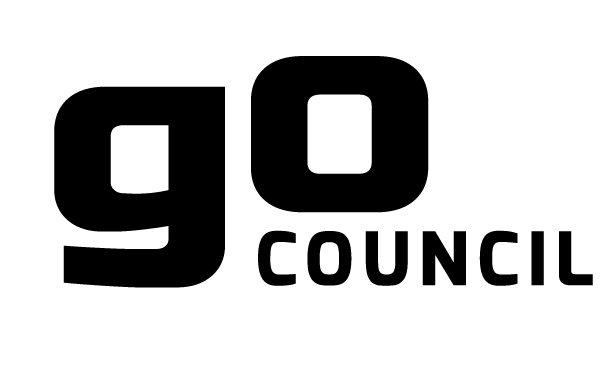

Steven Schiller, President International, The Hershey Company
The Hershey Company is a global confectionery leader known for its chocolate, sweets and other snacks. Founded in 1894, Hershey now has approximately 18,000 employees around the world. Holding more than 80 brands globally that drive more than $7.4 billion in annual revenue, Hershey is focused on growing its presence in key international markets while continuing to build its competitive advantage in North America. Steven Schiller, President for International Business, oversees the markets in China, Asia, Canada, Latin America, India, Europe, the Middle East and Africa.
What is your growth strategy at Hershey’s?
Steven Schiller: Hershey’s corporate strategy is based on a virtuous cycle of growth, margin expansion and investment. Hershey’s overarching growth strategy—referred to as 4x4—includes four “legs” to drive growth.
The first leg looks at how to drive growth in our core business. The second seeks to drive innovation. The third focuses on ‘the box and beyond’… in other words, winning with traditional retailers like supermarkets and convenience stores to move into new areas like food service and e-commerce. Finally, the fourth aims to expand the Hershey portfolio into broader snacking.
Simultaneously, we have a “Margin for Growth” program, which aims to unlock margins that exist within the business to enable greater investments to drive growth within 4x4. Margin for Growth improves Hershey’s overall operating profit margin through supply chain optimization, a streamlined operating model and reduced administrative expenses.
The goal of this program is to increase efficiency, leverage global shared services and common processes and increase capacity utilization. As we expand margins, we are able to make more investments. As we are able to make more investments, we are able to drive more growth.
What is the role of e-commerce in Hershey’s strategy today?
SS: Growth in e-commerce necessitates new thinking from consumer connectivity to purchasing habits. E-commerce is especially important in some of the markets I am responsible for, such as China—arguably one of the most advanced e-commerce marketplaces in the world. With e-commerce, change comes quickly, which impacts how we go to market and the specific capabilities we need in order to keep up with that change.
As a historically brick-and-mortar organization, we know we have to meet customers in this digitally focused commerce era. We restructured our departments so digitally focused employees are more directly integrated into our sales and marketing teams. Still, it is a challenge to drive consumption of historically “impulse” buys.
What is the foundation of your growth strategies?
SS: I believe that to create a true platform for change, the customer must be at the center of the conversation.
When we embarked on our own transformation, each functional and commercial owner spent a good amount of time analyzing where we needed to take the business model and what changes would be required. From there, the executive team analyzed each opportunity to determine which investments would be worth pursuing based on how they would improve the business model.
Decision-making at Hershey’s is formulated on the zero-based approach. Leaders need to think about where the business is today, where it needs to go tomorrow and which capabilities need investments for growth in the future. By using this approach, we are able to determine whether or not we are set up for success. This principle applies all the way from manufacturing processes to how people are structured within the business. Overall, ‘Margin for Change’ is a live way of thinking about change management.
What role does data have in revenue-driving activities?
SS: The sheer amount of data that companies are able to mine today brings substantial value to how strategic leaders think about analytics and revenue growth management. However, one of the biggest challenges in the international marketplace centers around data availability.
We want to ensure that we optimize investments to make the biggest impact with the dollars we spend. However, not all markets have the same advanced data capabilities afforded to the United States. Even when it comes to the basics, many markets don’t have the same level of reliability. Instead, these markets use more traditional trade, where stores are not always known or monitored, and there is certainly no central database where data can be aggregated and analyzed.
However, by understanding overall market trends and approaching each market in a manner that is appropriate to the culture and people of that market, growth leaders can succeed.
Individual dynamics and merits formulate our approach for each market. For instance, in China, we experience the evolution of e-commerce and its alignment with brick and mortar, which impacts how we structure our business there. In Brazil, one of the most socially connected markets in the world, we need to think about how we interact with those consumers in a regular and personalized way by leveraging social platforms.
What is the balance you strike between global and local engagement activities?
SS: Localization is the key to our success in international markets. It is a balancing act to not stray too far from our global brand identity, which is how we are recognized in households around the world.
The way I think about it is, the skeleton of a brand needs to be global, but the meat and tissue that go around that skeleton need to be local. Customers need to feel that we tailor to them. This customization is especially important as nationalism may create perceptions around imported goods as having lower quality. We balance between global and local, but there must be a thread that connects everything around the world in order to create scope and scale around your biggest asset: your brand.
When it comes to finding the balance operationally, everything connects back to our Margin for Growth program, where we emphasize focusing on core processes that ensure operations are as efficient and effective as possible.
As we look at structure, we focus on identifying areas that slow us down and create unnecessary bureaucracy. Our goal is to remove steps and people who do not add the right amount of value or who slow processes down. Today, we put more accountability into the hands of decision-makers to drive activities in the marketplace.
For the international business, this process means scaling back on the functional support that sits in the center of the organization and moving more decision-making to the operators on the ground. Having individual country-based leaders allows for them to be more responsive and service-oriented, and ultimately drives decisions that help build our business.
Do you have any parting words of advice for growth driving leaders across various lines of business?
SS: The world has become far more complex, and it will get even more complex as we move forward. The most successful growth leaders will be the ones who can take the complexity, make it simple for the organization to understand and then drive the company in a specific direction. Leaders need to be able to filter through the vast array of opportunities and boil them down to make simple decisions and drive direct actions. That is the only way to truly galvanize an organization.


